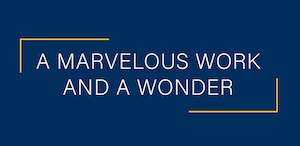
Joseph Smith Jr. was blessed with a testimony of the reality of God the Father and His Son, Jesus Christ, at a young age, after they both appeared to him in a grove of trees behind his home in upstate New York in 1820.
But it didn’t take long before 14-year-old Joseph faced religious persecution for this experience – persecution that stayed with him for the rest of his life.
“I soon found that my telling [of the First Vision] had excited a great deal of prejudice against me…and was the cause of great persecution, which continued to increase…” he later wrote.
Despite his young age, many still made fun of him and sought to discredit his experiences. It is a phenomenon that has no beginning and likely no end for any religious sect, including The Church of Jesus Christ of Latter-day Saints.
“The Book of Mormon has always been a target,” said BYU religion professor Jared Halverson. “If we understand its position as keystone scripture, then no wonder it’s going to be targeted, because if that keystone in the arch can be removed, then the rest of the stones will crumble.”
Much of what the Church teaches is founded in the Book of Mormon, labeled as “Another Testament of Jesus Christ.” Since the coming forth of the Book of Mormon, countless entities have sought to attack and belittle its origin and teachings.
The Book of Mormon itself details a story of persecution for choosing to follow its path. In a vision had by the prophet Lehi in 1 Nephi, he saw people pressing forward to be on the path that leads to God. While watching people on the path, he saw a building across the way. “I…beheld…a great and spacious building…and it was filled with people…and they were in the attitude of mocking and pointing their fingers towards those who had come [forth],” Lehi said in 1 Nephi 8:26-27.
Halverson has studied anti-religious rhetoric for 12 years. While arguments can vary in their tactics, Halverson broke down the rhetoric of those who fight against any church into three categories he calls the “Three S’s”: sensational, superficial and selective.
Sensational
Halverson described sensationalism as “something new that has been thrown in your face, that you weren’t aware of up to that point.” He explained that a lot of Church history has been sensationalized, leading many to questions that turn into doubts. Whether it be the Church’s practice of polygamy or how few people saw the gold plates, events are highlighted as key arguments when they actually have little ground to stand on.
Sensationalism can be combated with “simple faith,” Halverson said.
Superficial
Halverson described superficiality as debates that are overly simplistic, often taking information out of context. He shared a story of a person he talked with who claimed the Church is hoping its members won’t get to know their history, or else the Church would lose its faithful members. Halverson’s response was, “First, I don’t know of another church that spends more time teaching its history than we do. Second, I think it’s you who is hoping we don’t study our history enough.”
The person’s argument was superficial in its vagueness about Church history and lack of acknowledging that the Church teaches its own history often, according to Halverson.
Halverson said many people who choose the superficial arguments against the Book of Mormon often teach enough to destabilize a person, but leave out enough to make it all seem destitute.
If we try to understand things in context and go deeper into the meaning of various scriptures and teachings, we can overcome superficial arguments, Halverson said.
Selective
“If you’re a debate moderator and you only hold the microphone to one party, you know who’s going to win the debate,” Halverson said. He explained that oftentimes many constructors of anti-Church rhetoric only reflect one side of a story, often the most negative side, making the rhetoric selective.
“Be aware of multiple sources; don’t take the first attack you hear. Look around to see what other sources are available,” Halverson suggested.
Long-time Palmyra resident Jonathan Porschet assisted with the Palmyra pageant, a play the Church would put on every summer to help tell the story of the Book of Mormon. Protestors would line up at the pageant and hand out anti-Church materials with this selective combat approach. Porschet said the protestors’ efforts actually helped pageant-goers learn more about the Church.
“[The protests] prompted people to ask good questions, and as you search out answers to questions, it strengthens your faith…I think it did more good than bad for the Church, because people used their questions as springboards,” Porshet said.
Reacting to anti-Church rhetoric
When it comes to interacting with protestors and anti-Church material, former pageant presidency member Chris Bjorling said it best.
He said he would bring the protestors snacks and water and help them set up their signs. “We can’t forget our values just because they preach against ours,” Bjorling said. “We are here to help our brother.”
Just like Porschet’s experience, Bjorling believes the protestors also helped the nonmembers who attended that pageant see the truthfulness of the Church.
“As they protested louder, those who were not members of our faith wanted to learn more about [us],” Bjorling said.
While persecution followed Joseph Smith for the rest of his life, leading to his death and the death of his brother Hyrum, the work of the Church continues to move forward.
Whether the arguments Church members face are sensational, superficial or selective, Bjorling said the opposition testifies to the truthfulness of the message.
“[Nonmembers attending the pageant] wanted to know why some people are so vehemently against our message…I think, mainly, it’s because of the truth of what we have to offer,” Bjorling said.




